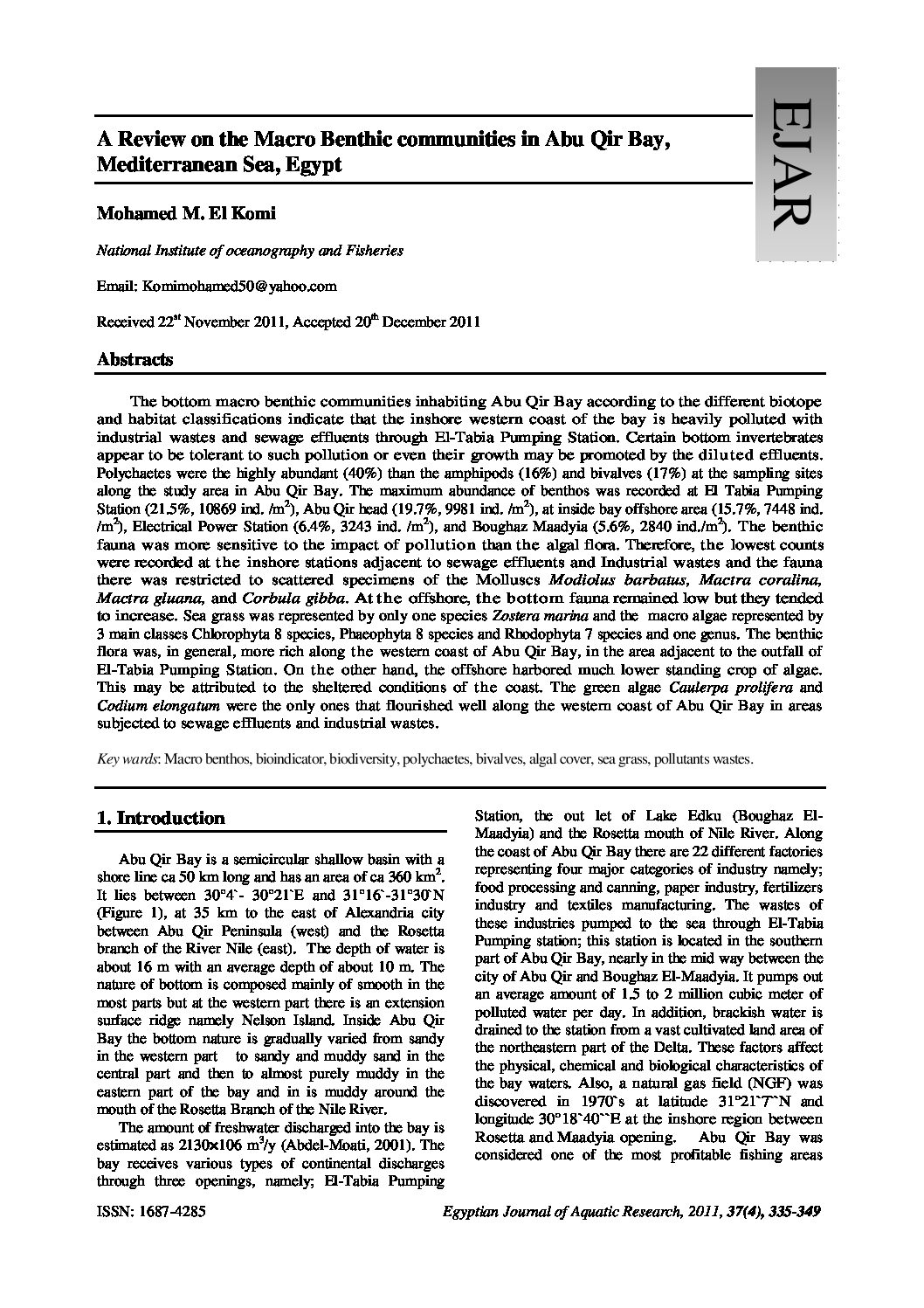Categories
vol-37Zooplankton community at fish fry collection sites along the
Mediterranean coast of Egypt
Nagwa E. Abdel-Aziz and Ahmed M. Heneash
National Institute of Oceanography and Fisheries
Received 28th August 2011, Accepted 15th December 2011
Abstract
The abundance and diversity of zooplankton community were studied during the period from February 2005 to
February 2006 at six sites. Every site was represented by one station, where fish fry of marine origin were collected
along the Mediterranean coast of Egypt. Water quality was also considered. Chosen stations are heavily perturbed
by land drainage discharge, high nutrient levels, abundant zooplankton, and a low diversity index. Kassara station is
characterized by its highest density of zooplankton (427.7 X103 ind/m3
), the lowest diversity index, presumably
reflecting a combination of the high nutrient loading of this system, high dissolved oxygen, and the low salinity of
water. On the other hand Soffara station was affected much less by drain water, so it has the lowest zooplankton
abundance (27.7 X103 ind/m3
) combined with high salinity. Variable zooplankton peaks were detected between
different investigated stations. Although the density of the total zooplankton community reached its maximum value
during spring at Naubaria and El-Mex stations; it was the highest during summer at Maadia station, and during
winter 2006 at the other three stations. The most numerically important group was the rotifers which formed 10 to
88% of the total average zooplankton, dominated by Brachionus spp. especially Brachionus plicatilis which formed
approximately from 10% to 74% to the total average rotifers at the studied stations. Copepods, of which 48% to
91% were nauplii stages contributed from 6% to 51% to the total average number of zooplankton at the six stations.
The dominant copepod species was Oithona nana. During some months copepod nauplii were the single
representative of copepods at one station or more. The meroplanktonic stages of molluscs, polychaetes and
cirripedes were also important taxa. Brachionus plicatilis (48.1%) and copepod nauplii (11.3%) were the dominant
zooplankton taxa, and form the main zooplankton food supply of fish fry at these sites.
Keywords: Zooplankton, diversity, community composition, fish fry, Mediterranean coast.







